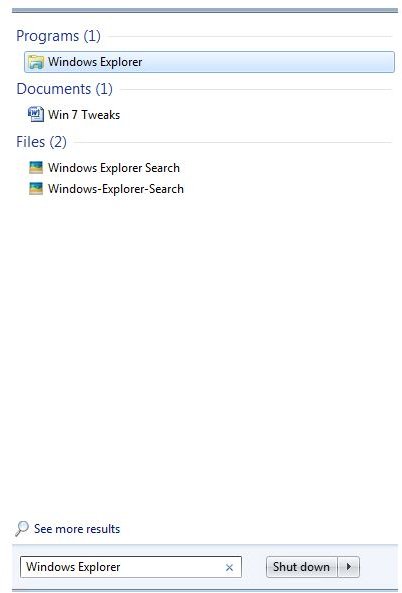The Top Seven Win7 Tweaks and Tricks
From tweaking the registry to expanding taskbar previews to enabling the checkbox option to select multiple files with ease, the list of Windows 7 tricks is endless. With the latest Windows edition from Microsoft, you can expect more than just simple tips. You can now get a power energy report or just wiggle the title bar of a window to minimize all open windows automatically. Here are some of the best Win7 tweaks, complete with plenty of screenshots:
1. Check Box Option to Select Multiple Files:
Windows 7 has a new check box option that lets you select multiple files for easy copying and deletion. In earlier versions of Windows, you had to Ctrl-click every file to select multiple files. With Windows 7 there’s no such hassle as now you can just click on the check boxes of the files and then delete, move or copy those checked files. Here’s a step-by-step guide to enable the new check box option:
-
Type Windows Explorer is the Start Menu search box and press Enter key.
-
Click Organize on the top-left hand side of the screen and then click Folder and Search Options
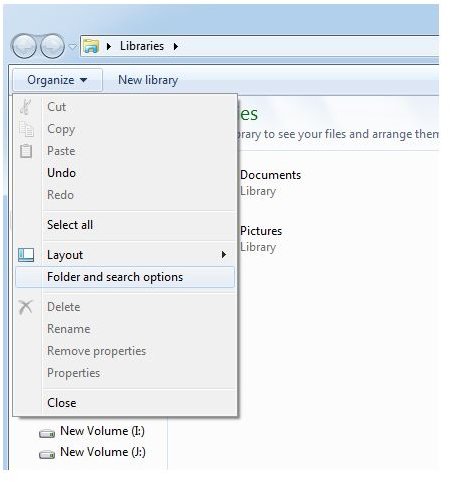
- Click the View tab and select Use check boxes to select items in the Advanced Settings box. Click OK.
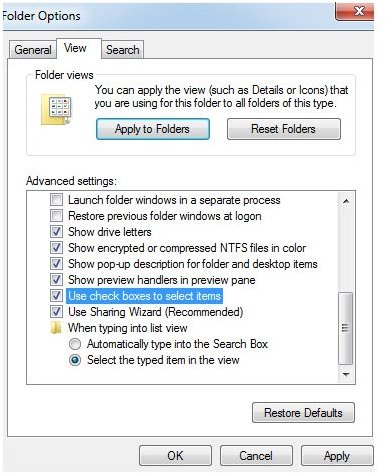
Just hover your mouse cursor to any file and you will see an empty check box appear. All you have to do is click on the empty check box to select the file. You can then select additional files by checking the boxes next to them.
2. Minimize Every Window Using the Windows 7 “Shake” Feature
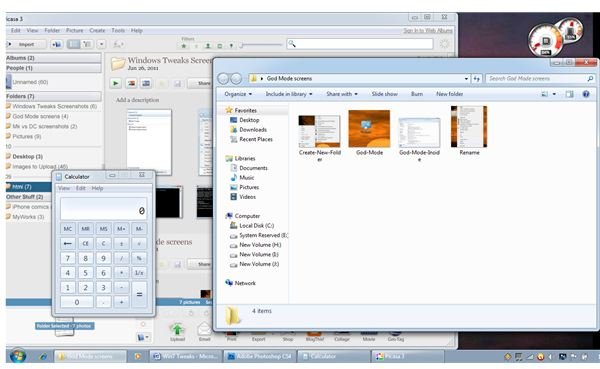
With the new Windows “Shake” feature, you can easily declutter your desktop. Just jiggle the title bar of an opened window slightly and voila! Other windows get minimized in seconds. This new feature is extremely useful for those who run multiple programs simultaneously and want to minimize other windows (except the program they are working on) all at once.
To have fun with the Windows 7 Shake feature, all you have to do is click and hold the title bar of a window that you want to keep open on the desktop. Give it a slight jiggle and within no seconds other windows get minimized to the task bar. If you want them back again, give the window a slight jiggle once again. A keyboard shortcut for this new feature is Window key + Home key. But, then who wants to perform this boring operation when you have a nifty shake feature. (Note: This feature is enabled in Windows 7 Home Premium, Ultimate and Professional editions)
3. Get a Power Energy Report
There are plenty of Win7 tweaks and tricks, and the Power Energy Report is one of them. You can get this report to find out different issues that eat away your laptop’s battery life. Basically, this feature helps you analyze the energy efficiency of your PC and laptop. Here’s a step-by-step tutorial to get the energy report:
- First, make sure that you enable this report when no program is running in the background. In the Start Menu search box type and right-click Command Prompt. Then click Run as administrator.
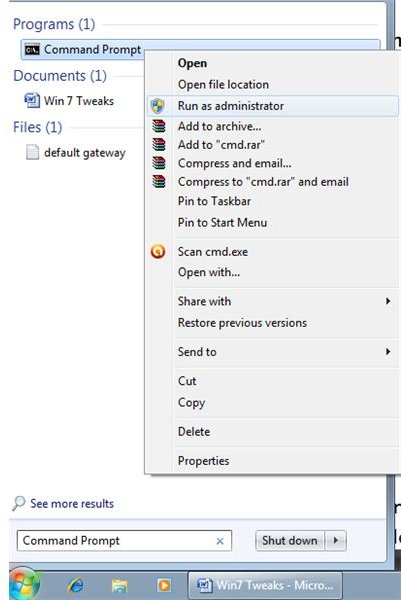
- Type powercfg –energy at C:\Windows\system32 and press enter.

- It will take approximately 60 seconds to generate a file named energy-report.html. After Windows 7 analyzes system behavior and trace data, it will generate the report in: C:\Windows\system32 >energy-report.html
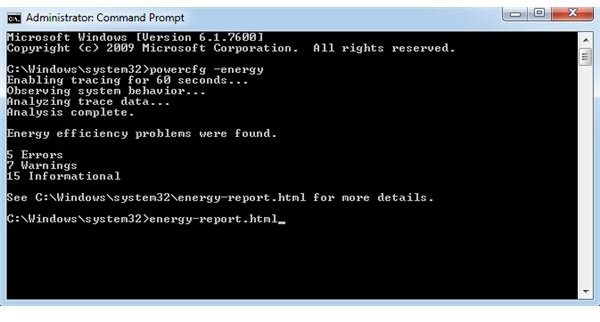
- You will have to type energy-report.html at the command prompt to open the report in Internet Explorer or any other default browser.
You can then post the energy report in Microsoft TechNet forums to get expert help on issues concerning the energy efficiency of the computer.
4. Taskbar Previews
One of the new features in Windows 7 is the taskbar preview. Just hover your mouse cursor over any minimized window in the task bar and you can see a mini-preview of the window. However, the preview is too tiny to perceive anything. There’s a nifty little trick to expand the tiny preview, but it involves tweaking the Windows 7 registry. To make taskbar previews larger than the default size, follow these Windows 7 tweaks:
- In the Start Menu search box, type REGEDIT and open the registry.
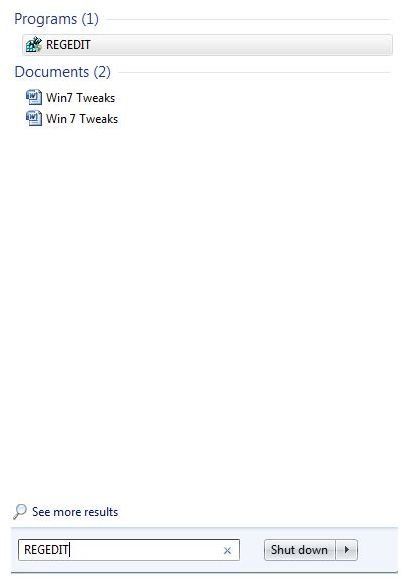
- In the HKEY_CURRENT_USER folder, browse to software>Microsoft>Windows>CurrentVersion>Explorer>Taskband. In the task pane on your right hand side, right-click, select New and click DWORD (32 bit) value.

- Rename the DWORD to MinThumbSizePx.
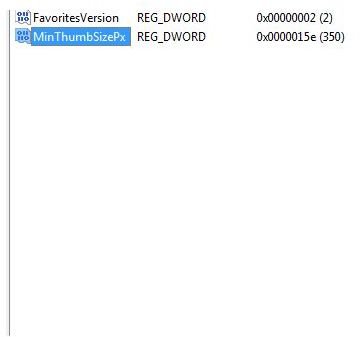
- Next, double-click this newly created key and select Decimal. You can then set any value more than 350 to enlarge the taskbar previews.
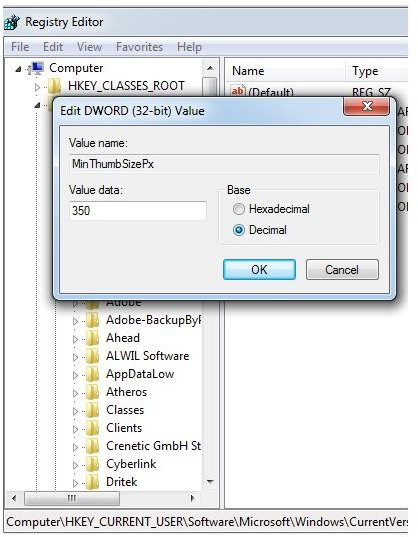
After entering the value, restart your system and then hover your mouse over to a minimized window. You can tweak the value to make it larger. To return to the default preview, just delete MinThumbSizePx.
5. Quickly Repair Your Operating System
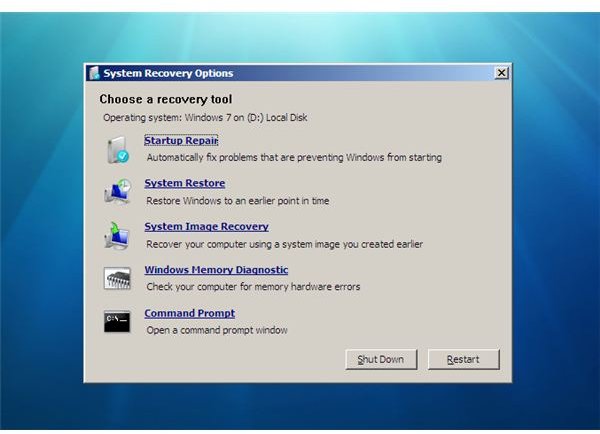
Gone are the days of separate repair disks for your system. With Windows 7 installed in your computer, there’s no need of an installation disk. Just press F8 when the PC starts. Select the Repair Your Computer option and press enter. You will see some nifty Windows 7 repair and recovery tools, including:
- Startup Repair that automatically fixes errors that prevent your system from starting.
- System Image Recovery to recover your system using a system image created earlier.
- Windows Memory Diagnostic to check whether there are any memory hardware errors in the computer.
6. Windows 7 Problems Steps Recorder to Record all Your System Problems
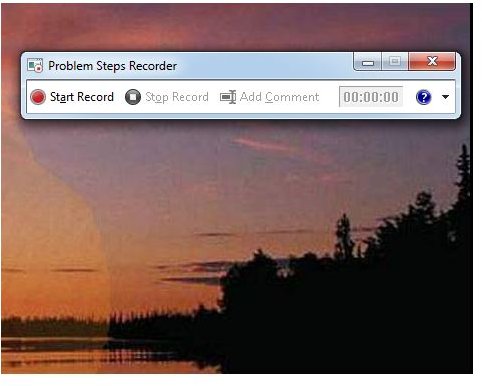
There are times when you want to share your Windows 7 problems with your PC repairer, but you fail to clearly describe the exact reason behind the unexpected hiccups your operation system is experiencing. To solve this problem, Windows 7 has an excellent tool called Problem Steps Recorder.
To open this tool, type PSR in the Windows 7 Start Menu Search Box and press Enter.
In the Problem Steps Recorder Window, click Start Record. The recorder will record every action performed, from clicks to keypresses. It will also capture screenshots and store everything in a single MHTML file. You can then email this file to your local PC guru to find out the cause to the problem. The PSR is truly an easy and effective way to “record” your system problems.
7. Add a Link to Your Videos Folder
This is one of the easiest Win7 tweaks to get all your important folders to your Start menu. On your Start Menu, you will find links to your Music and Pictures folders. You can also add a link to your Videos folder. Follow these simple steps if you want to include a video link to your Start menu:
- Place your mouse cursor on the Start button and right-click it. Select Properties.

- Click on the Start Menu tab and Click Customize.
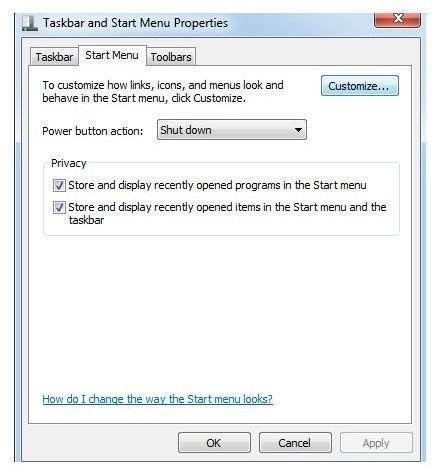
- Scroll to the bottom of the dialog box and select “Display as a Link” in the Videos section. Click OK twice.
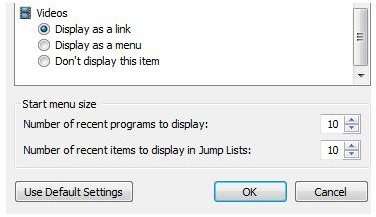
You can also select “Display as a Menu”, if you prefer to display the video folder on the Start menu with links to submenus and files.
References
- Screenshots by the author
